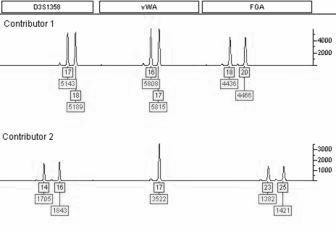DNA: It’s Not Exactly Squeaky Clean
Problems exist in every aspect of our lives. No, our world is not perfect, but we do the best we can with what we have. But there’s trouble everywhere. Toyota is recalling hundreds of vehicles. A brand of over the counter medicine has some sort of funky odor and shouldn’t be consumed. Produce is contaminated with deadly bacteria. A major oil company is killing the entire Gulf of Mexico and everything around it. Russian spies. Politicians. Even our criminal justice system is faulty, including the Golden Child of forensics, DNA.
Wait! Did I say DNA is faulty? Surely, that can’t be true…
But it is, and here are a few problems associated with DNA testing that could cause real trouble for prosecutors.
1. Mixtures – When more than one person’s DNA comprises a single sample, then three or more alleles (one of two or more alternate forms of a gene) could be found in at least one location on a chromosome. In short, a mixture of DNA can be confusing and is subject to multiple interpretations, which equals reasonable doubt. And reasonable doubt could result in letting a guilty person off the hook.
2. Degradation – DNA samples can degrade when exposed to harsh conditions. Samples may also deteriorate with age. The electropherogram plotting below shows the reduction in peak (the individual markers that set each person apart) size with degradation of the DNA sample.
3. Stutter peaks – Stutter peaks are little blips on the *electropherogram. These “false peaks” are actually caused during PCR (DNA copying process) and show up as a larger or smaller duplicate of the actual fragment. They’re not real, but they’re there, which allows a defense attorney to cry reasonable doubt.
4. Blobs and Noise – During the process of DNA testing, DNA is separated and the tiny pieces are dyed so they’ll show up (That’s not quite right, but it’s the best simple explanation I could come up with. It’s close enough). Sometimes extra globs of dye (remember, these are tiny, tiny bits of dye) bind together and as they pass through the genetic analyzer they show up as their own peak. This can be quite bad since the extra peak combined with the real peaks could mimic someone else’s DNA.
Air bubbles and minute particles of whatever (dust, debris, etc.) could pass through the machine creating “noise” which also appear as odd peaks. An expert would probably recognize the blobs and noise for what they are, but again…reasonable doubt.
So, as you see, DNA is not an exact science. It’s very close, but there is definitely enough wiggle room for error. And that’s all a good defense attorney needs to cry foul. However, not every defense attorney is familiar with DNA testing and the errors that could result from the various problems. Of course, these aren’t the only problems that could occur with DNA testing. For starters, there’s the evidence collection/contamination by police officers and evidence technicians. But that’s a story all it’s own.
* An electropherogram is basically a computer printout of DNA.
background: #bd081c no-repeat scroll 3px 50% / 14px 14px; position: absolute; opacity: 1; z-index: 8675309; display: none; cursor: pointer; top: 228px; left: 20px;”>Save




